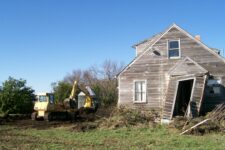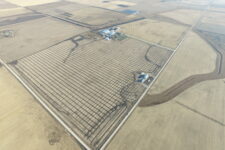Farm drainage systems keep agricultural processes operating efficiently. Implementing technology into drainage systems boosts their effectiveness, helps manage excess water, improves soil health, and increases crop yield. Efficient drainage reduces the risk of water-related issues— such as flooding and waterlogging— while optimizing the ROI of a piece of land.
As agriculture grows in complexity, new issues arise; these problems require modern solutions. Technology such as GIS mapping and soil moisture sensors help farmers identify areas that need drainage improvements and optimize the placement of drainage tiling. Integrating technology helps farmers streamline operations to save time and money while maximizing their land’s potential.
What are some examples of farm drainage systems?
Generally, farm drainage systems fall into two categories: surface and subsurface drainage systems. Surface drainage systems remove excess water using equipment on top of the soil’s surface. Subsurface drainage systems, like field tiling, are more advanced. They complete the draining process using underground equipment.
For more information on farm drainage technology, check out The Smart Farmer’s Guide To Field Tiling And Its Attractive ROI.
What are advanced farm drainage systems?
An advanced farm drainage system integrates technological tools into traditional drainage methods. These integrations help farmers better manage their land by improving its efficiency and sustainability. Advanced drainage systems boast significant improvements on older methods and are becoming increasingly common in agriculture.
Luft and Sons are field tiling and drainage experts, and we happily address all questions on system processes.
What are some examples of farm drainage technology?
Internet of Things (IoT) devices and Geographic Information Systems (GIS) are two examples of technology that improve farm drainage systems.
- IoT devices offer real-time monitoring of moisture levels and other metrics. They provide insight into the water flow and help farmers determine where to improve. Additionally, they provide real-time alerts regarding system issues, allowing farmers to address system leaks or clogs immediately. These alerts minimize crop loss and improve the ROI of a farm.
- GIS technology reveals valuable spatial data, including land elevations, soil types, and water flow patterns. This data identifies areas that need drainage improvement, allowing farmers to plan drainage systems accordingly.
Curious about the current ROI of your farm? Our ROI Calculator provides an accurate estimate.

What are the economic and environmental benefits of technology-enhanced farm drainage?
Advancements in farm drainage technology help reduce labor costs, improve water efficiency, and improve farm sustainability.
Technology automates water level monitoring, valve control, and data analysis. Real-time data allows farmers to address maintenance concerns quickly and minimizes the risk of costly repairs. Additionally, these monitoring and control systems help track water usage. Doing so enables farmers to optimize drainage and irrigation efforts in areas that need it most, which conserves water and reduces utility costs.
Advanced drainage systems boost farm sustainability by minimizing nutrient loss and enhancing crop yield, thus lowering a farm’s environmental impact. Improved drainage systems cultivate healthy crops and use resources efficiently.
What are some challenges in adopting technology for land drainage?
Integrating technology into farm drainage systems has plenty of benefits. Despite this, many farmers share two common concerns.
- Cost: Integrating technology into drainage systems has an unavoidable upfront cost. However, the long-term benefits outweigh these concerns. Efficient drainage systems with technological integration save money in the long run.
- Equipment training: Farmers must understand how to use and maintain their farm drainage systems. It takes time to learn how to implement new technology. However, proper training is a worthwhile investment. In the long run, modern equipment helps increase the profitability and sustainability of your farm.
Additionally, a consultation with a drainage and tiling expert helps mitigate these concerns.
Farmers should embrace these adaptations to boost their agricultural productivity. Adopting new technology into drainage systems helps farmers increase crop yield, optimize ROI, and remain competitive. Contact us to learn more.


